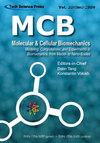基于DRR配准的光学- ct双模映射
Q4 Biochemistry, Genetics and Molecular Biology
引用次数: 0
摘要
光学- ct双模成像需要二维荧光图像与三维体表光通量之间的映射。本文提出了一种基于数字重建放射成像(DRR)配准的光学- ct双模图像映射算法。在配准过程中,利用射线投射算法从CT数据中计算出一系列的DRR图像。然后,采用改进的基于Hausdorff距离的HMNI相似度策略完成白光光学图像与DRR虚拟图像的配准;根据图像配准得到的对应关系和基于针孔成像模型的朗伯特余弦定律,可以求解物体表面的三维光强分布。通过不规则幻像和小鼠实验验证了该映射算法的可行性和有效性。关键字:DRR;FMT;二重形式登记;映射本文章由计算机程序翻译,如有差异,请以英文原文为准。
Optical-CT Dual-Modality Mapping Base on DRR Registration
Optical-CT dual-modality imaging requires the mapping between 2D fluorescence images and 3D body surface light flux. In this paper, we proposed an optical-CT dual-modality image mapping algorithm based on the Digitally Reconstructed Radiography (DRR) registration. In the process of registration, a series of DRR images were computed from CT data using the ray casting algorithm. Then, the improved HMNI similarity strategy based on Hausdorff distance was used to complete the registration of the white-light optical images and DRR virtual images. According to the corresponding relationship obtained by the image registration and the Lambert’s cosine law based on the pin-hole imaging model, the 3D light intensity distribution on the surface of the object could be solved. The feasibility and effectiveness of the mapping algorithm are verified by the irregular phantom and mouse experiments. Keyword: DRR; FMT; dual-modality registration; mapping
求助全文
通过发布文献求助,成功后即可免费获取论文全文。
去求助
来源期刊

Molecular & Cellular Biomechanics
CELL BIOLOGYENGINEERING, BIOMEDICAL&-ENGINEERING, BIOMEDICAL
CiteScore
1.70
自引率
0.00%
发文量
21
期刊介绍:
The field of biomechanics concerns with motion, deformation, and forces in biological systems. With the explosive progress in molecular biology, genomic engineering, bioimaging, and nanotechnology, there will be an ever-increasing generation of knowledge and information concerning the mechanobiology of genes, proteins, cells, tissues, and organs. Such information will bring new diagnostic tools, new therapeutic approaches, and new knowledge on ourselves and our interactions with our environment. It becomes apparent that biomechanics focusing on molecules, cells as well as tissues and organs is an important aspect of modern biomedical sciences. The aims of this journal are to facilitate the studies of the mechanics of biomolecules (including proteins, genes, cytoskeletons, etc.), cells (and their interactions with extracellular matrix), tissues and organs, the development of relevant advanced mathematical methods, and the discovery of biological secrets. As science concerns only with relative truth, we seek ideas that are state-of-the-art, which may be controversial, but stimulate and promote new ideas, new techniques, and new applications.
 求助内容:
求助内容: 应助结果提醒方式:
应助结果提醒方式:


